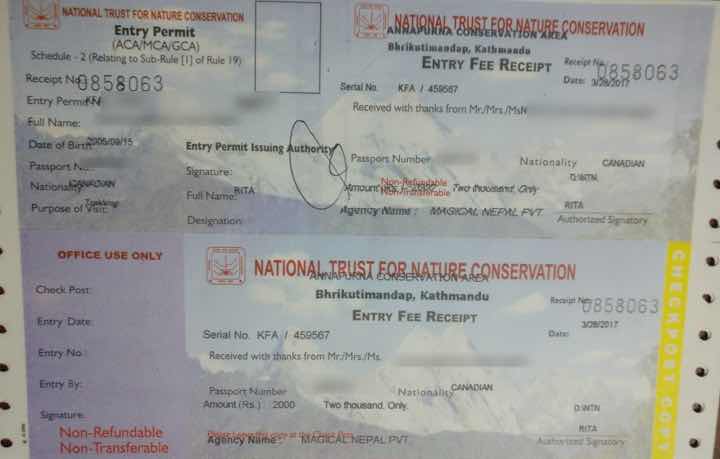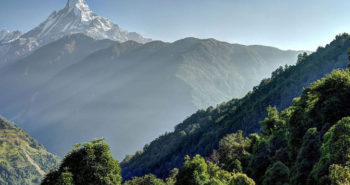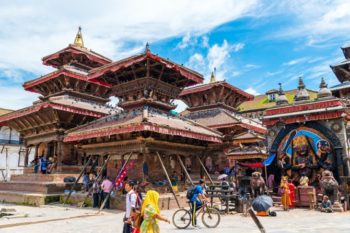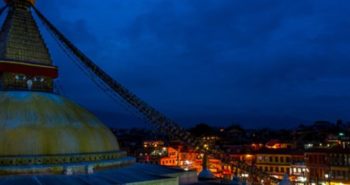Annapurna Circuit Trek Permits
You need two permits for the Annapurna Circuit Trek :
Annapurna Conservation Area Permit (ACAP)
- NPR 3,000 per person Roughly USD 3
- NPR 200 per person for SAARC nationals Roughly USD 0.2
- Children below 10 years do not require an ACAP permit
TIMS Trekkers Permit
- NPR 1,000 per person for organized treks through an agency (permit is blue in colour) Roughly USD 10
- NPR 2,000 per person for independent trekkers (going without guide or porter) (permit is green in colour). Roughly USD 20
- NPR 600 per person for SAARC nationals Roughly USD 6
Those people trekking with an agency will need to provide one photograph and do not need to be present in person at the permit counter. If you are trekking with Magical Nepal, we can obtain the permits for you.
Those people trekking individually need to provide two photographs and each person in your group will need to be present at the permit counter. You cannot apply on behalf of your friends, all of you must go to one of the offices below:-
- Nepal Tourism Board (NTB), Exhibition Road, Bhrikuti Mandap, Kathmandu
- Nepal Tourism Board (NTB), Dam Side, Pokhara
Important Information
- Both permits are for a single entry.
- Once issued permits are non-refundable and non-transferable.
- The validity of your permit is based on your application, so read the form carefully.
- Permits are the same price regardless as to how many days you are going ie 5 days or 10 days (therefore it is a good idea to build in extra days in case of delays).
- It is required to enter the permit details at ALL counters along the trail. This is for YOUR OWN SAFETY so please do not fail to do this at each counter.
Why do we need permits?
ACAP Permit

Started 1986, the Annapurna Conservation Area Project (ACAP) by the National Trust for Nature Conservation (NTNC), ACAP is the first conservation area in Nepal.
It is also the largest protected area in the country, with an area of 7,629km2. The human population is over 100,000 people with different cultures and languages. But moreover, ACAP is rich in biodiversity. The figures are 105 mammals, 518 birds, 23 amphibians, 40 reptiles, and 1,226 species of flowering plants. Impressive!
It is for this diversity of culture and flora and fauna that the ACAP area is one of the most popular trekking areas in Nepal. Many years ago tourism was established as a key sector for the local economy.
It continues to be. Currently, there are over 1,000 lodges and teashops. With all the other necessary subsidiary services to deal with the thousands of trekkers who come through every year.
Not to mention their support staff and religious pilgrims. As you can imagine, this has negatively impacted the environment and put immense pressure on forest resources. Let’s just look at one aspect – garbage.
It is estimated each trekking group (say 15 people) has about 15kg of garbage (non-biodegradable) over a 10 day trekking period. You can imagine how much this adds up to every year!
So in order to manage this aspect of trekking and to protect the environment and wildlife, as well as to respect the local people’s traditional livelihoods ACAP was born. ACAP’s overall goal is “to achieve a sustained balance between nature conservation and socio-economic improvement in the Annapurna Conservation Area (ACA) thereby assist National Trust for Nature Conservation in achieving its goal.”
The following objectives help it achieve this goal:-
- Conserve natural resources of the Annapurna Conservation Area for the benefit of all, now and in the future.
- Bring sustainable social and economic development to people living locally.
- Develop tourism to ensure it has a minimum negative impact on the natural, socio-cultural and economic environments.
Your contribution through the ACAP permit helps ACAP reach this goal. Your contribution also goes to maintain this landscape for everyone in the future – trekkers, locals. And, of course, for the protection of flora and fauna.
TIMS Permit

The Trekkers Information Management Systems (TIMS) Permit is for your own safety. By showing your TIMS card at the checkpoints along the trails you will be registered on the system.
This is extremely vital if you go missing or have an accident while trekking. So don’t skip the checkpoints because you are tired, it is busy, or just because you can. This is for YOUR protection!
This permit is implemented jointly by the Nepal Tourism Board (NTB) and the Trekking Agencies Association of Nepal (TAAN) for the safety of every trekker in Nepal.
The FAQ of Annapurna Circuit Trek Permit
1. I am an Indian Citizen. Do I need permits?
Yes, you need permits. There is a special rate for SAARC member country citizens.
2. I am a Nepali citizen. Do I need permits to do this trek?
Nepali citizens don’t need a permit for any trek in Nepal.
3. Can I hire a local agency to get the permit for me yet not trek with them?
No, local agencies can’t issue permits for independent trekkers. This is because they would be liable and responsible if something happened to the trekkers on the trail
4. Which currency should I use to pay for the permits?
You should pay for the permits in Nepali Rupees
5. Can I get a permit before my arrival in Nepal?
No, you can’t get a permit before your arrival in Nepal. Once you arrive, your trekking agency will ensure the proper paperwork is done and apply for you.
If you are trekking independently, you must appear yourself at the relevant office. You cannot apply for your friend either. Each trekker, if independent, has to go to the office in person.
6. I am planning to do ABC after this trek. Do I need two permits?
You don’t need two permits. If you want to continue onto the ABC trek after the Annapurna Circuit Trek you can use the same permit. Ensure when applying for the permit you put down the total days you will be trekking – both the number of days on the Annapurna Circuit and ABC. You do not have to pay for additional days but you must provide the number of days you intend to trek for.


